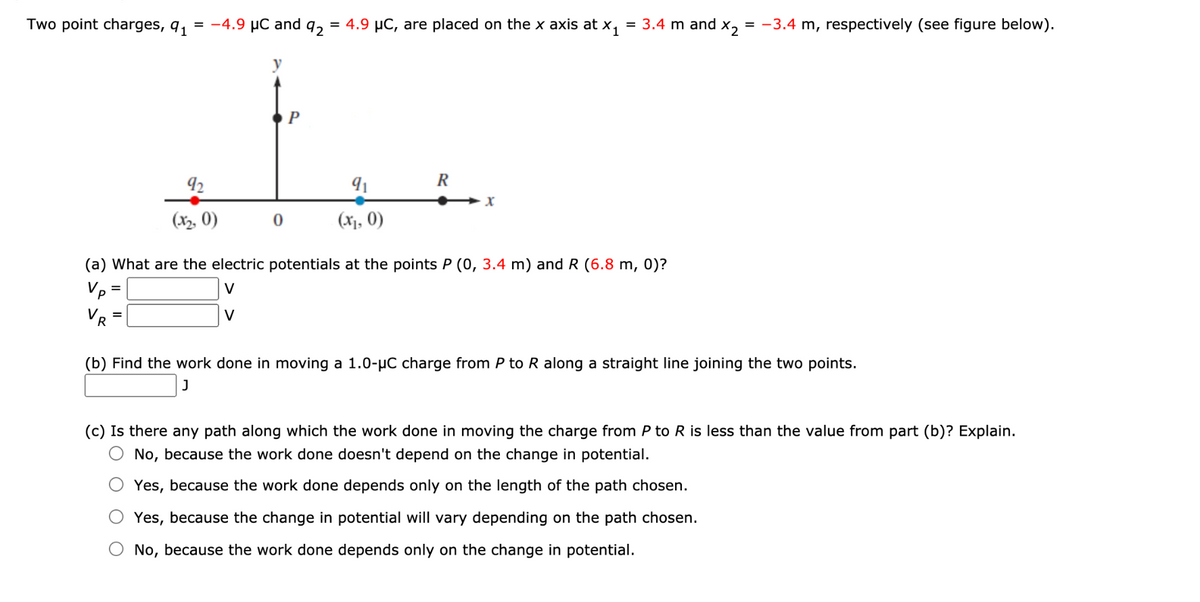Two point charges, q, = -4.9 µC and q, = 4.9 µC, are placed on the x axis at x, = 3.4 m and x, = -3.4 m, respectively (see figure below). (x, 0) (x, 0) (a) What are the electric potentials at the points P (0, 3.4 m) and R (6.8 m, 0)? Vp = VR = V V (b) Find the work done in moving a 1.0-µC charge from P to R along a straight line joining the two points. (c) Is there any path along which the work done in moving the charge from P to R is less than the value from part (b)? Explain. O No, because the work done doesn't depend on the change in potential. O Yes, because the work done depends only on the length of the path chosen. O Yes, because the change in potential will vary depending on the path chosen. O No, because the work done depends only on the change in potential.
Two point charges, q, = -4.9 µC and q, = 4.9 µC, are placed on the x axis at x, = 3.4 m and x, = -3.4 m, respectively (see figure below). (x, 0) (x, 0) (a) What are the electric potentials at the points P (0, 3.4 m) and R (6.8 m, 0)? Vp = VR = V V (b) Find the work done in moving a 1.0-µC charge from P to R along a straight line joining the two points. (c) Is there any path along which the work done in moving the charge from P to R is less than the value from part (b)? Explain. O No, because the work done doesn't depend on the change in potential. O Yes, because the work done depends only on the length of the path chosen. O Yes, because the change in potential will vary depending on the path chosen. O No, because the work done depends only on the change in potential.
Related questions
Question
How should I do this one?

Transcribed Image Text:Two point charges, q,
= -4.9 µC and q2
= 4.9 µC, are placed on the x axis at x,
= 3.4 m and x2
= -3.4 m, respectively (see figure below).
P
92
R
(х, 0)
(Xị, 0)
(a) What are the electric potentials at the points P (0, 3.4 m) and R (6.8 m, 0)?
Vp
V
V. =
R
V
(b) Find the work done in moving a 1.0-µC charge from P to R along a straight line joining the two points.
J
(c) Is there any path along which the work done in moving the charge from P to R is less than the value from part (b)? Explain.
No, because the work done doesn't depend on the change in potential.
Yes, because the work done depends only on the length of the path chosen.
Yes, because the change in potential will vary depending on the path chosen.
No, because the work done depends only on the change in potential.
O O
Expert Solution
This question has been solved!
Explore an expertly crafted, step-by-step solution for a thorough understanding of key concepts.
This is a popular solution!
Trending now
This is a popular solution!
Step by step
Solved in 3 steps with 14 images
